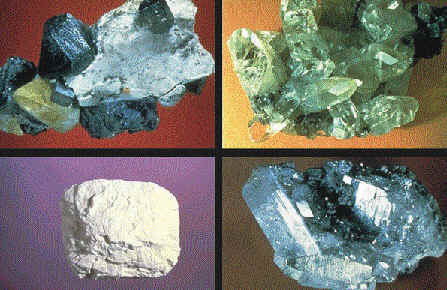Mineralogy is the branch of geology that studies the physical and chemical properties of minerals found on the planet in their different states of aggregation. A mineral is understood as a matter of inorganic origin, which has a defined chemical composition in addition to a crystallographic structure and which usually occurs in a solid and crystalline state at the average temperature of the Earth, although some, such as water and mercury, occur in liquid state.
The study of minerals can be divided into 5 large groups:
General mineralogy: studies the structure, crystallography, and properties of minerals.
Determinative mineralogy: applies physicochemical and structural properties to the determination of mineral species.
Mineralogenesis: It studies the conditions for the formation of minerals, how the deposits appear in nature and the exploitation techniques.
Descriptive mineralogy: studies minerals and systematically classifies them according to their structure and composition.
Economic mineralogy: develops the applications of mineral matter, its economic and industrial utility, gemology...etc.
Therefore a mineral, for example carbon, can crystallize in different structures, through the cubic system; in this case it is called diamond, or if it crystallizes in the hexagonal system, it forms graphite. Their appearance is enough to recognize that they are two different minerals, although a deeper study is necessary to understand that they have the same chemical composition.
There are also several minerals that can present duality in their behavior and these are called mineraloids.
Minerals can be distinguished using these properties:
—Color of the mineral —Brightness —Hardness —Density


Ramifications of mineralogy
For a more complete knowledge, Mineralogy has objectively branched into large sections that could well be, at present, totally independent sciences and each one of them is dedicated to studying a specific section of the properties of minerals or to focus on the study of its origin, associations and form of occurrence, its use in industries as raw material or its applications as ornamental materials.
If we consider the definition initially stated for Mineralogy, as the science that studies minerals under the concepts of origin, internal structure, external form, composition, physical and chemical properties, associations, uses and applications, it can be established that depending on These concepts are given by the divisions or ramifications of Mineralogy, being mainly the following:
CRYSTALLOGRAPHY: It is the science that studies crystals in their internal structure, external form and the laws that govern their growth.
MINERALOGENIA or MINERALOGENESIS: is the study of the origin of minerals, applying the basic principles of chemistry and thermodynamics. This branch of mineralogy establishes that the main mineral formation processes are:
- from molten silicate mixtures
- by sublimation
- from aqueous solutions
- by metamorphic processes
- by metasomatic processes
- by alteration processes (transformation)
PHYSICAL MINERALOGY: is the study of the physical properties of minerals. Identifying the properties that are a function of cohesion, light, magnetic properties and electrical conductivity.
OPTICAL MINERALOGY: Within physical mineralogy, an important property in minerals is the study of the behavior of different wavelengths through them, giving rise to this technique of studying minerals. Which can be defined as the study of minerals in thin section (30 microns thick) under the polarizing or petrographic microscope. If the optical analysis is carried out by studying the behavior of the wavelengths that are reflected by opaque minerals, another branch is established, known as MINERAGRAPHY, which is the study of opaque minerals in polished section and under the microscope. reflection or mineragraphic.
CHEMICAL MINERALOGY: studies the general chemical principles applied to mineral species, such as tests by dry and wet methods.
CRYSTALLOCHEMISTRY: studies the relationships between the crystalline structure of bodies and their physical and chemical properties.
SYSTEMATIC MINERALOGY: classifies and describes mineral species, considering their origin, crystallography, mineralogical varieties, physical and chemical properties, associations, uses and applications.
DETERMINATIVE MINERALOGY: applies the knowledge of Crystallography, Physical Mineralogy (optics and mineralogy), Chemical Mineralogy and Systematic Mineralogy for the identification of mineral species.
ECONOMIC MINERALOGY: is the study of minerals as a raw material for many industries, since their location, exploitation and benefit play an important role in the economy of nations. The most widely accepted classification for the economic performance of minerals is based on the presence of a chemically metallic element or combination of metals and they are studied separately from deposits or minerals that have one or more chemically non-metallic elements.
GEMOLOGY: It is the study of gems and these are minerals, mineraloids, organic and synthetic minerals that, due to their qualities of color, shine and shape, seem beautiful to us. In general, gems and precious stones are those rare minerals and mineraloids with a certain hardness, beauty, purity, brightness, color, used for ornamental purposes.
